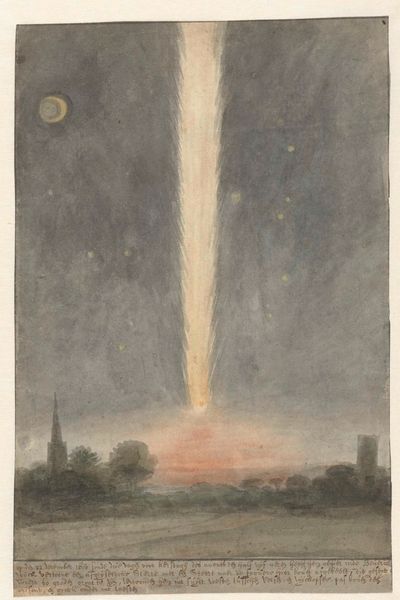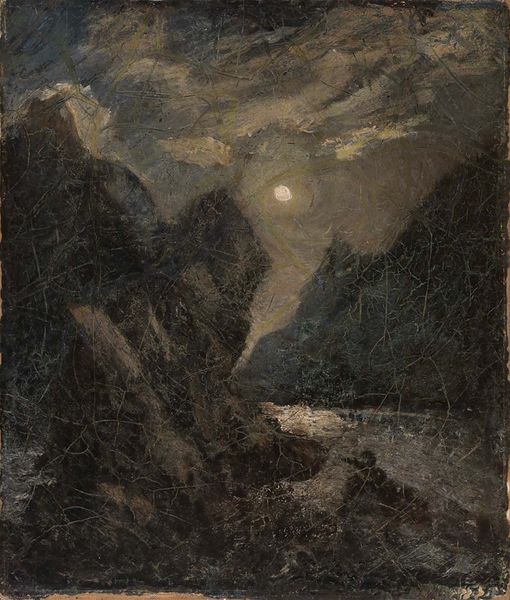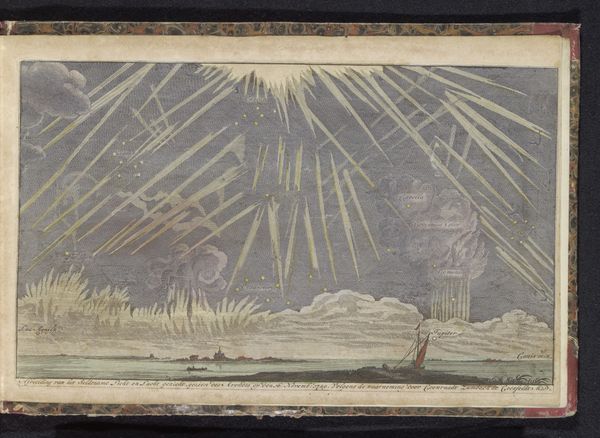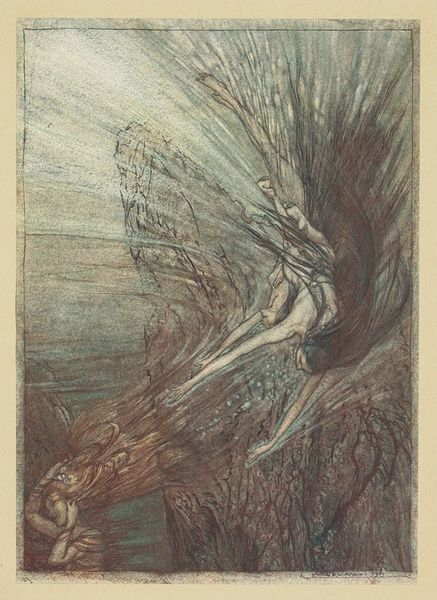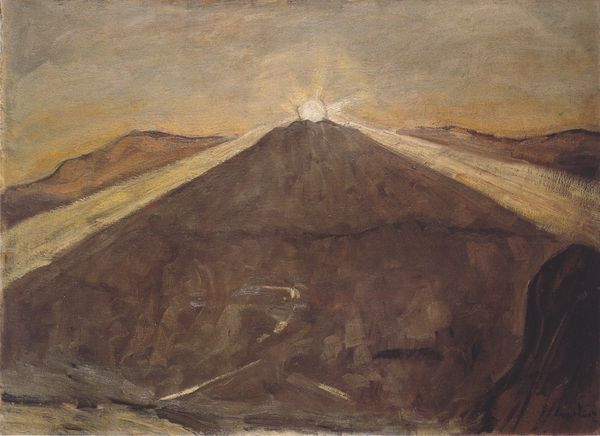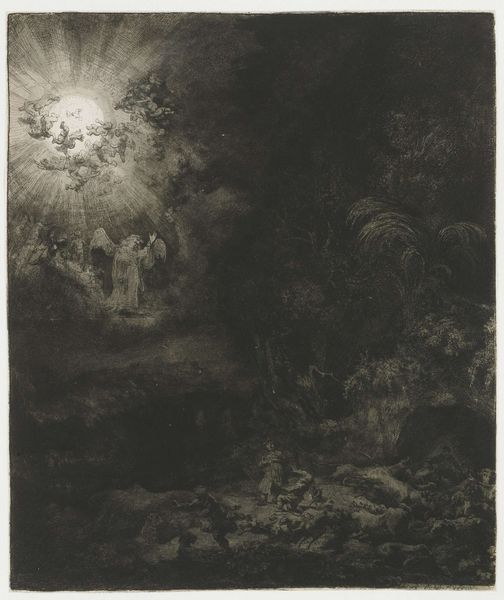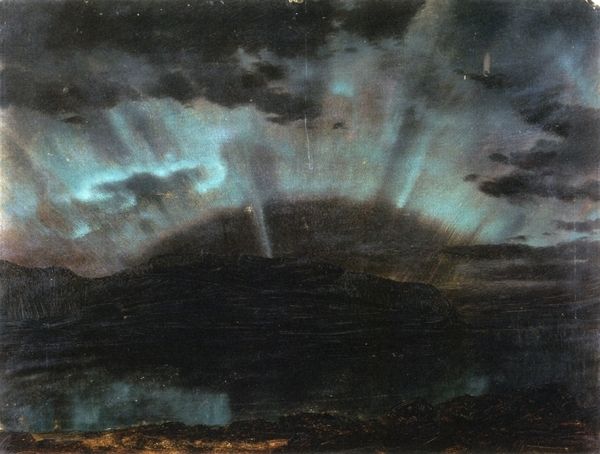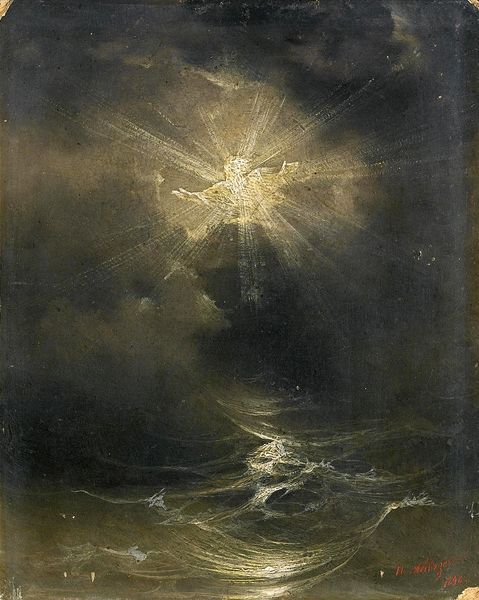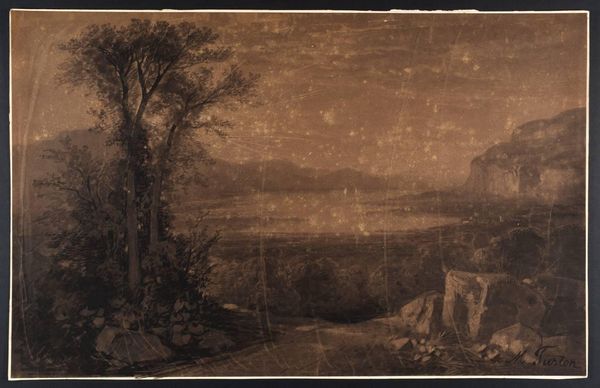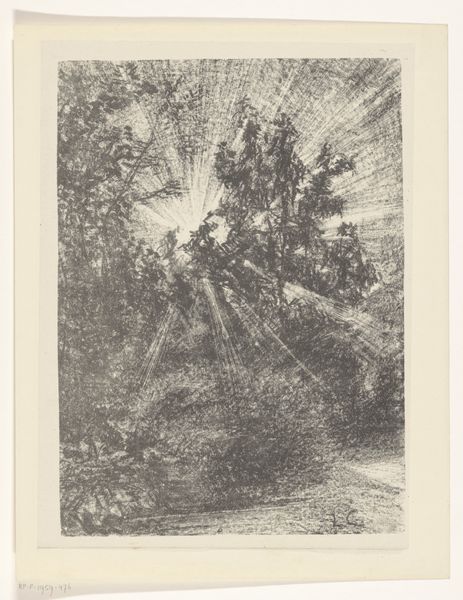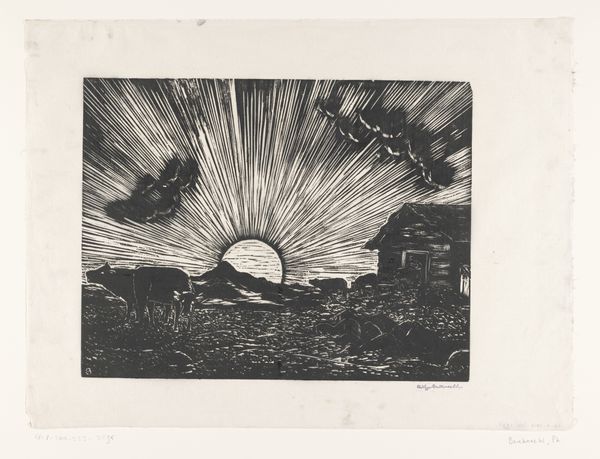
Dimensions: support: 508 x 406 mm frame: 680 x 580 x 85 mm
Copyright: © Tate | CC-BY-NC-ND 4.0 DEED, Photo: Tate
Curator: Nevinson’s "A Star Shell," held here at the Tate, depicts a scene from the First World War, though its exact date remains unconfirmed. Editor: The first thing that strikes me is that stark contrast – that brilliant, almost blinding light dominating a landscape of impenetrable darkness. It feels unsettling. Curator: Indeed. Light can symbolize hope or divine intervention, but here, it feels more like an artificial, intrusive force, revealing the harsh reality of the trenches. Editor: And look at how he's handled the materiality! It's oil on canvas, yet it's as if he's sculpted the mud and barbed wire. You can almost feel the weight of the materials. Curator: The barbed wire itself acts as a potent symbol of entrapment and the loss of freedom, doesn't it? It's visually piercing, yet offers no escape. Editor: I'm struck by how Nevinson has used this almost brutal application of paint to highlight not just the visible, but the physical experience of war. Curator: It makes you consider how the symbolism of light and dark intertwines with the sheer physical hardship. Editor: Absolutely, and analyzing the materiality adds another layer to our comprehension of the scene’s impact.
Comments
Join the conversation
Join millions of artists and users on Artera today and experience the ultimate creative platform.
tate 7 months ago
⋮
In this apocalyptic image, an exploding shell illuminates the battlefield like a star. Nevinson had been closely associated with the Futurist and Vorticist movements, which celebrated the machine age, but his wartime paintings bear witness to the destructive power of technology. Here the man-made explosion lends the landscape a visionary quality. This is almost certainly one of the works Nevinson painted in 1916, after he was invalided out of the Royal Army Medical Corps. Gallery label, August 2008
